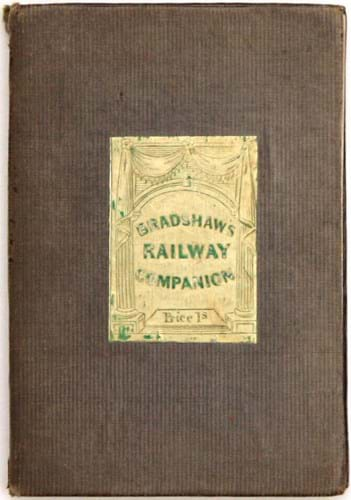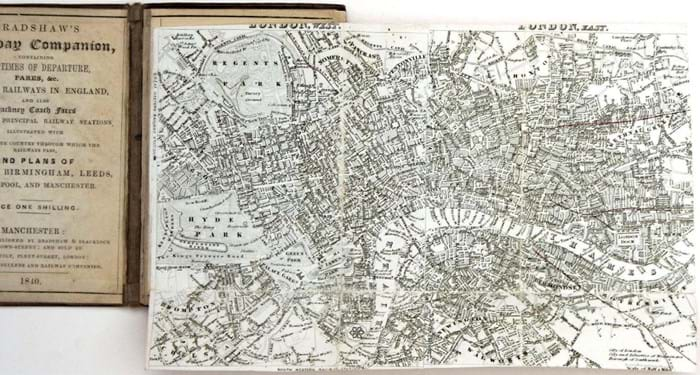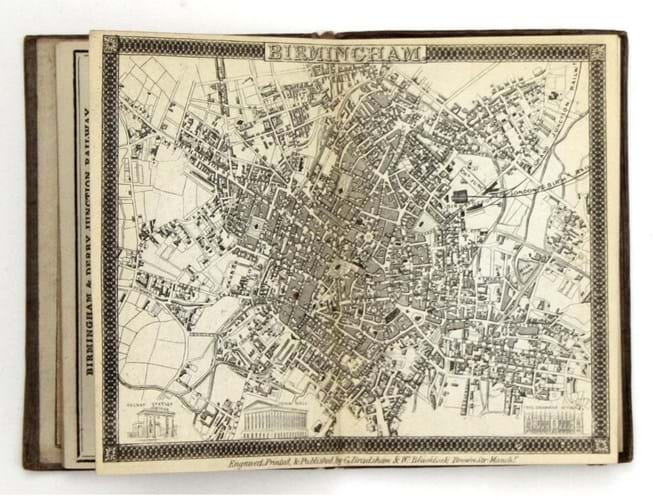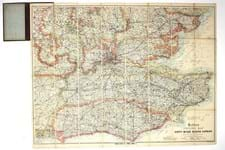
Maps and books specialist Tim Bryars sums up well the impact of George Bradshaw (1800-53) – a name that has again enjoyed familiarity thanks to a certain former politician with a penchant for railway travel and brightly coloured blazers.
However, despite Michael Portillo’s boost to the market, the earliest versions of the guide remain a relatively affordable option for collectors, says Bryars.
At his shop in the mini-antiques ‘hub’ of Cecil Court, he has for sale one of the very first Bradshaws: a Bradshaw’s Railway Companion from 1840 priced at £500.
Railway mania
While there is some argument over what the first Bradshaw actually is – it is “possible he produced some kind of separate timetable sheets that simply haven’t survived, round about 1838” – this guide came out very soon after the first spate of railway mania in the 1830s.
It is worth recalling that the world’s first passenger steam railway, the Stockton & Darlington, dates from 1825.
This, says Bryars, was the cutting edge of Victorian Britain: “I find early railways really exciting – it is like the IT revolution of their day. You are talking about the democratisation of travel. All of a sudden – and I can’t remember who said it now – famously you can have breakfast in London, lunch in Manchester, supper in York and sleep in Edinburgh.”
Bradshaw was a major player and pioneer of this mass transit age.
Road improvements encouraged some of the first pocket books to keep 17th century carriage passengers entertained. Canals had transformed the movement of freight (Bradshaw cut his teeth producing maps of the new network ). However, the railways were the game-changer.
“By the late 1830s there is enough of a national network for the idea of not just line by line timetables and maps but something that covers all of it so you can change trains and get from one end of the country to the other, and that’s where Bradshaw comes in,” says Bryars.
“He basically gets there first with something that is viable. In 1839 Bradshaw does the first map where the railways are the main attraction and then there is this tiny little guide deliberately designed for the waistcoat pocket. That is not the first timetable, but it is the first comprehensive timetable for a number of different railways and it aimed to be comprehensive.”

Bradshaw’s Railway Companion 1840, containing the times of departure, fares etc, of the railways in England, and also hackney coach fares from the principal railway stations, illustrated with maps of the country through which the railways pass, and of plans of London, Birmingham, Leeds, Liverpool and Manchester. Priced £500 at Bryars & Bryars.
Streamlining the guide
Bound in cloth, they were constructed in an unusual fashion to allow for monthly revisions to the rail timetable. Each double page spread was pasted to the next back-to-back with up-to-date sheets then be pasted over the top.
“It is ingenious but by the mid 1840s I think Bradshaw had realised nobody normal was going to do that,” says Bryars.
He soon switched to a guide, stitched in the normal way, that could be discarded after a month and then to the ‘chatty’ travel guides that were important to the democratisation of travel in both the UK and Europe. “These continental guides are very sought-after as well,” says Bryars. “They come in during the 1840s when you have a rail network spreading throughout continental Europe which requires its own guide.
“These are again a mixture of timetable and Baedeker guidebook – where to go and stay, and again the railways open up the whole continent of Europe to you.
“All of a sudden you see all of the trappings of the modern tourist industry coming into place around the middle of the 19th century, pioneered in Switzerland and on the Rhine. You have tourist hotels, tourist souvenirs/tat and people are already beginning to complain about hearing English voices wherever they go.”

Bradshaw’s Railway Companion 1840, containing the times of departure, fares etc, of the railways in England, and also hackney coach fares from the principal railway stations, illustrated with maps of the country through which the railways pass, and of plans of London, Birmingham, Leeds, Liverpool and Manchester. Priced £500 at Bryars & Bryars.
Collecting market
Michael Portillo uses the 1913 Bradshaw continental guide in his TV programme.
With the exception of this volume – “I haven’t had a 1913 guide since Portillo did that programme – it is unobtainable,” says Bryars – these guides are not widely collected.
“In terms of what I sell in the shop I have far more collectors for 20th century London Transport memorabilia, which is the cornerstone of my business. Perhaps because it is more accessible. Quite a few of my collectors for London Transport material are interested in London history, transport history and industrial design. I have a lot of buyers in Scandinavia and the Netherlands.”
Bryars adds: “I suspect that Bradshaws are not big money for what they are. They are incredibly rare little things but it is a bit more niche.
“You can pay easily the same price as the 1840 Bradshaw for a 1920s or 30s London Underground passenger map.”















